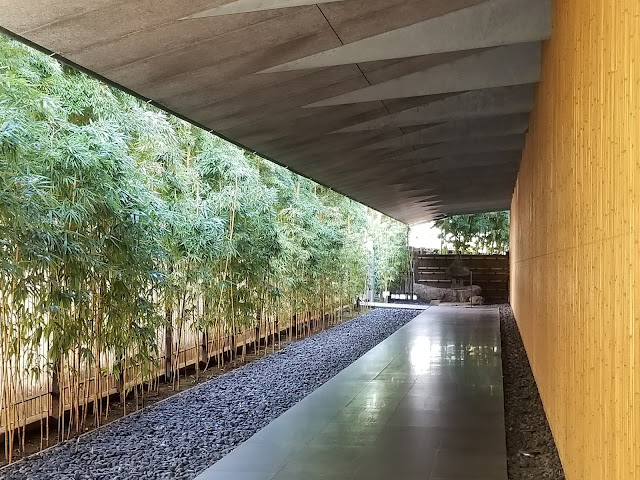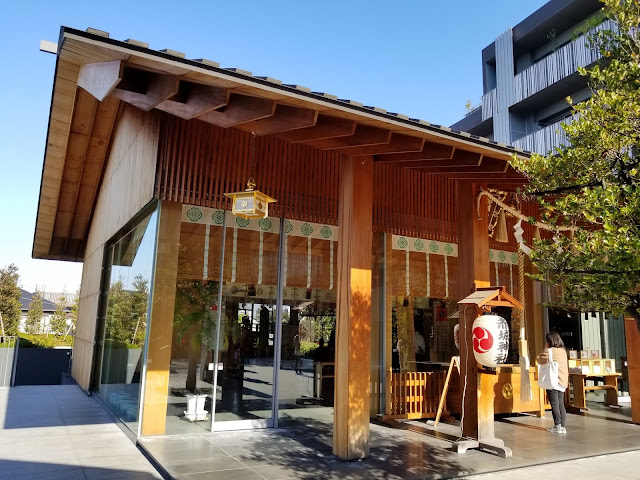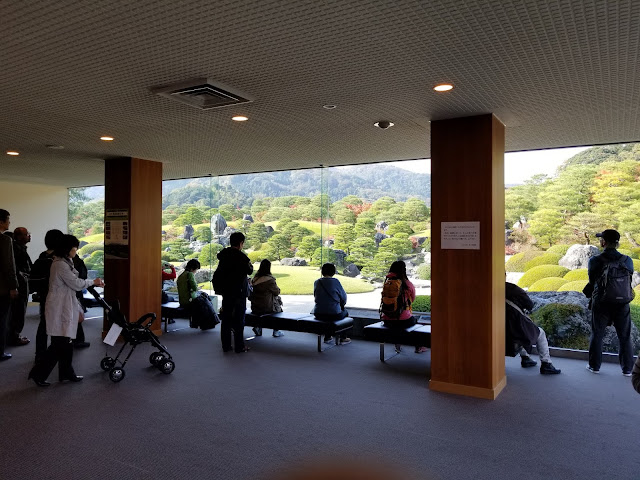This article was updated on 19 Sep 2021 to clarify taking the train or subway to get to the museum.
The Nezu Museum (根津美術館, Nezu Bijutsukan) is an art museum in the Minato district of Tokyo, Japan. The museum houses the private collection of pre-modern Japanese and East Asian art of Nezu Kaichirō (1860–1940), the former President of Tōbu Railway, and is built on Nezu's former residence and garden. Closed due to large-scale renovation and renewal in 2006, the museum re-opened in fall 2009 with a completely new museum building designed by the noted Japanese architect Kuma Kengo [1]. Kuma Kengo was also the architect for the modern redesign of the Akagi Shrine, which I reviewed in this earlier article:
One of the defining architectural features of the Nezu Museum is the street entrance. The photograph of the entrance at the beginning of this article is the museum's most identifiable feature and is a tribute to Kuma Kengo's skill as an architect. As the museum is a very popular with both tourists and locals, it is really hard to get a photo without someone walking through it!
While it is worth a visit to view the art exhibits at the Nezu Museum when you're in Tokyo, for me the real reason to visit the museum is to see the garden. The site not only contains the museum, but also four tea houses and statuary within the garden. I last visited the museum on 29 Nov 2017, when the Fall colors were the most prominent and the garden most picturesque. Read the rest of the article to find out more information, and see more photographs of the museum and gardens.




